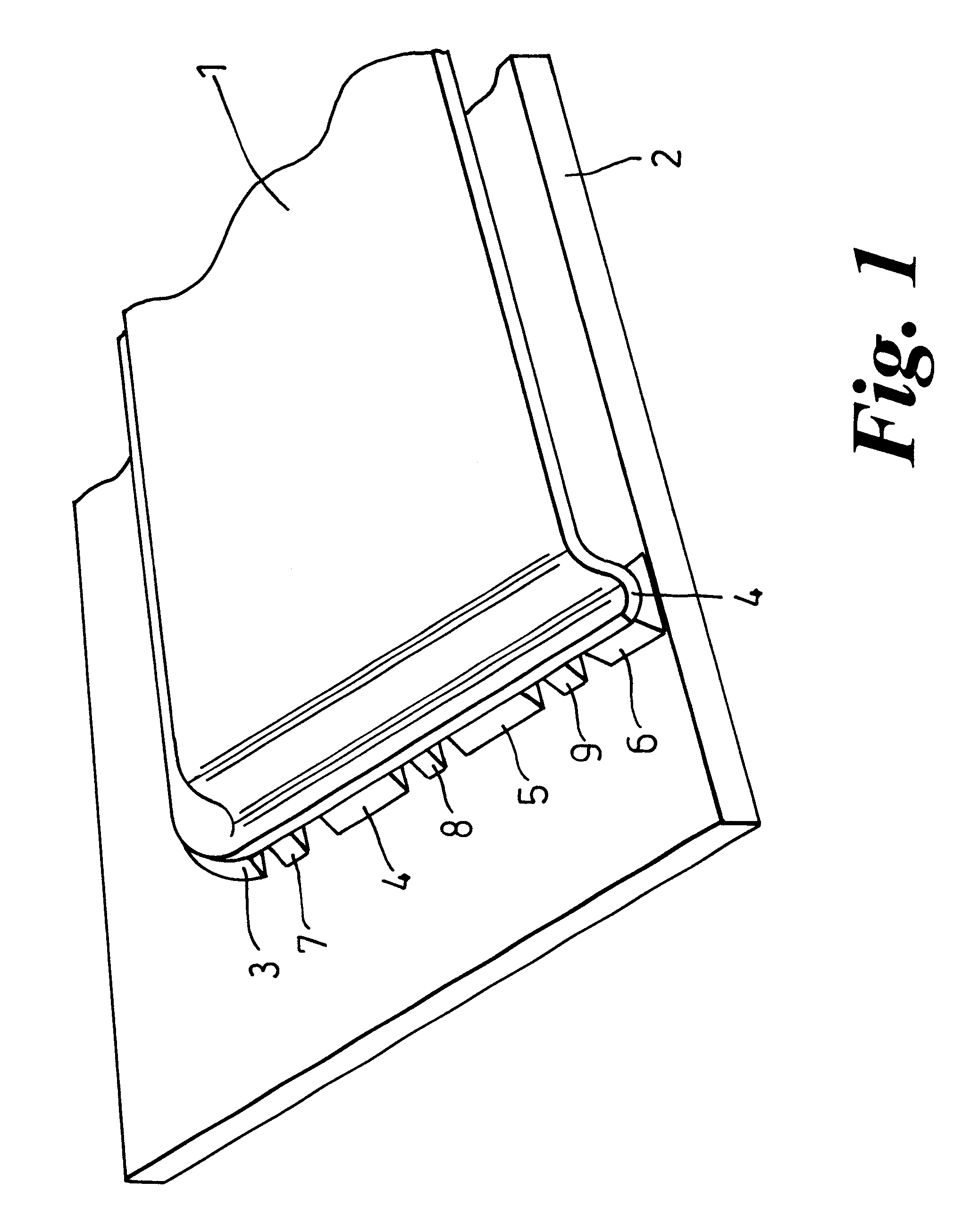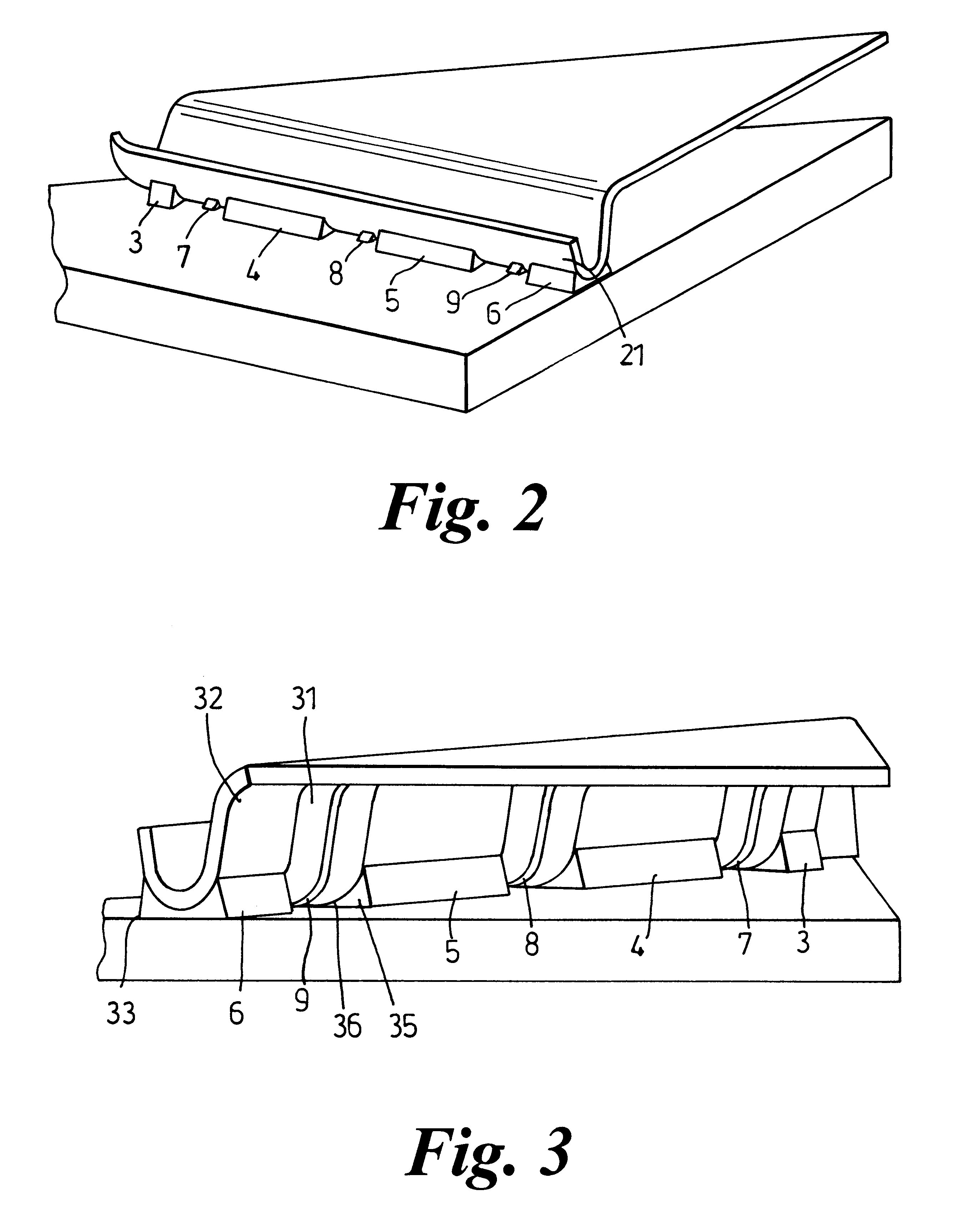Solder joint reliability
a technology of solder joints and reliability, applied in the field of solder joints, can solve the problems of reducing the resistance to solder joint fatigue failure, adding to time and cost of manufacture, and difficult to align small solder joints during re-flow in manufacture, so as to improve the reliability of solder joints and improve the alignment of such joints
- Summary
- Abstract
- Description
- Claims
- Application Information
AI Technical Summary
Benefits of technology
Problems solved by technology
Method used
Image
Examples
Embodiment Construction
FIG. 1 shows a cut-away view of a surface-mount peripheral package 1 attached around its rim 11 to a printed wiring board (PWB) 2 (or circuit board) by means of a plurality of solder joints 3-9.
The solder joints, in addition to providing the physical attachment of package to board, form electrical connections between a first circuit portion located on the underside of the package and a second circuit portion located on the circuit board surface. Electrical connection may also be provided between the outer surface of the package and the circuit board for the purpose of providing electrical grounding whereby to provide electromagnetic shielding of the circuit enclosed by the package.
Referring now to FIGS. 2 and 3, there are shown views of a portion of the arrangement shown in FIG. 1, comprising a one eighth portion of the peripheral package. In each case a perspective view is shown, revealing the outer face 21 and inner face 31 of the rim 11 of the package respectively. Seven solder j...
PUM
 Login to View More
Login to View More Abstract
Description
Claims
Application Information
 Login to View More
Login to View More - R&D
- Intellectual Property
- Life Sciences
- Materials
- Tech Scout
- Unparalleled Data Quality
- Higher Quality Content
- 60% Fewer Hallucinations
Browse by: Latest US Patents, China's latest patents, Technical Efficacy Thesaurus, Application Domain, Technology Topic, Popular Technical Reports.
© 2025 PatSnap. All rights reserved.Legal|Privacy policy|Modern Slavery Act Transparency Statement|Sitemap|About US| Contact US: help@patsnap.com



